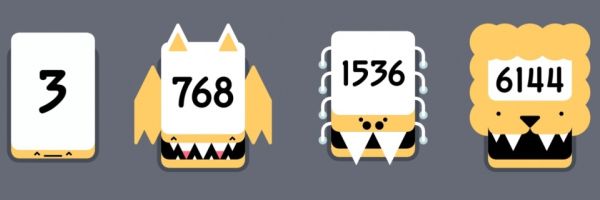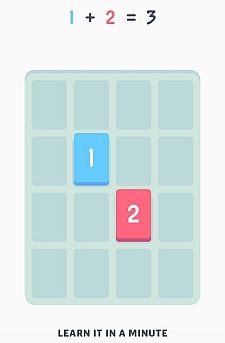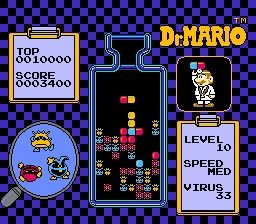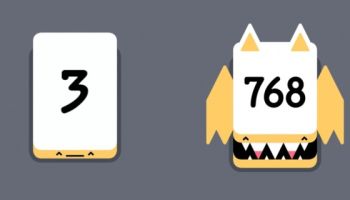
Wordle jumpstarted a new wave of addictive puzzle games after it was released to almost universal praise in 2020. Players found competition and comradery in those green and yellow squares during the COVID pandemic, and this little bit of personality continues to fuel the game’s popularity today.
But puzzle games have always had personality, and on the second anniversary of Wordle‘s acquisition by The New York Times, I decided to look back on an article I wrote for Warp Zoned in 2014 that argued exactly that. A lightly edited and updated version of that article has been reprinted here.
As video games begin to resemble film and television productions more and more with each passing generation, it’s interesting to observe that puzzle games continue to remain a vibrant genre.
Puzzle games burst onto the scene at the very beginning, back when gaming was nothing more than a handful of pixels projected onto an old television. While everyone in the real world was attempting to master a Rubik’s Cube in as few moves as possible, puzzle game players were tackling the line destruction of Breakout and the line construction of Tetris. However, you might not have realized it, but the puzzle genre has become just as story-driven as everything else the game industry produces today.
It’s hard to pinpoint exactly when puzzle games started being produced with characters and, occasionally, a plot. But one of the newer games that best personifies this trend is the mobile blockbuster Threes. The goal of Threes is simple: slide around a series of playing cards on a 4×4 grid so that matching numerals are placed next to each other. When slid together, these numerals merge to create an even bigger number. Repeat until the board is full and you have no more moves.
 But Threes does a lot with its simple conceit through expert music selection and the face given to the game’s cards. The smallest cards are white with a thin slice of yellow running along the bottom, and within this slice are two dots for eyes and a small mouth that responds to events on the board. For example, when two cards that match join the board for the first time, they let out a shout and do a little dance. And when they get close to each other, their expressions change to acknowledge their new friend.
But Threes does a lot with its simple conceit through expert music selection and the face given to the game’s cards. The smallest cards are white with a thin slice of yellow running along the bottom, and within this slice are two dots for eyes and a small mouth that responds to events on the board. For example, when two cards that match join the board for the first time, they let out a shout and do a little dance. And when they get close to each other, their expressions change to acknowledge their new friend.
Each card also has a unique name and voice, and some of the larger cards are fully decked out with additional accessories like fangs or headphones.
Thanks to the funky background music, I’ve heard Threes referred to as “the ultimate party simulator.” The player is actually meant to be the host, and is attempting to push party guests with similar interests towards one another. And when two cards occupy the same space, that’s meant to show two people merging their separate relationships at the party into a single group.
Players interact with numbered playing cards to play Threes, but the game’s use of numbers is actually completely superfluous. There’s no math involved in the card matching, and they could actually depict any type of symbol or sign and the game would still play exactly the same. But by making them pseudo-people, the three creators of Threes deepen our connection to the game.
This conception of Threes as a puzzler populated by people was in place from the very beginning, as Vollmer described the search for voice actors in a collection of emails chronicling the game’s development: “Let me know if saying silly things into your microphone sounds at all like a fun time and I’ll send you a list of possible characters for you to play.”
While Threes personifies its characters in subtle ways, other developers have chosen a much more overt strategy. Shigeru Miyamoto famously once said that he considers all of Nintendo’s characters a repertory company of actors. Mario is not a plumber who was sucked into the magical Mushroom Kingdom. Instead, he’s an actor playing a role. The theory explains how Mario can spend an entire game bashing Bowser for kidnapping the Princess and then turn around and spend a fun afternoon go-karting with the big lug. It also explains how he can don a doctor’s white coat and dispense vitamins in Dr. Mario.
 Dr. Mario‘s puzzling premise is just as simple as Threes. A vertical well (depicted as a sample bottle) full of tri-colored viruses have to be removed by matching them with three vitamins of the same color. Again, the viruses could be anything (their faces are actually too small to make out in the well), and the vitamins are just a facade laid over a simple game of color matching blocks.
Dr. Mario‘s puzzling premise is just as simple as Threes. A vertical well (depicted as a sample bottle) full of tri-colored viruses have to be removed by matching them with three vitamins of the same color. Again, the viruses could be anything (their faces are actually too small to make out in the well), and the vitamins are just a facade laid over a simple game of color matching blocks.
But thanks to the game’s vertical well, Nintendo is able to literally fill in the edges and give the world of Dr. Mario something extra. The vitamins themselves are doled out by a random sequence deep within the game’s programming, but because the right side of the screen shows them being dispensed by Dr. Mario, the player is able to picture the plumber as his or her helper. A magnifying glass on the left side of the screen shows a closeup of the three viruses. Each virus has a different personality and they will react in exaggerated ways as you clear the well of their offspring. With the viruses now large enough to see, you’re no longer doing color matching in a puzzle game, you’re defeating a foe.
You can even see how much of a difference these choices make as Dr. Mario came together. The magnified viruses were not present in the earliest builds of the game, which used a generic setting and title (the game was originally known as Virus). You can see how it looked for yourself at The Cutting Room Floor).
Almost all of Nintendo’s classic puzzle games used a variation of this branding trick over the years. Yoshi, Yoshi’s Cookie, and Kirby Avalanche all used Nintendo characters as a wrapper over a tile-matching game. Sega even took Kirby Avalanche (originally released as Puyo Puyo in Japan) and rewrapped it with Sonic the Hedgehog characters and called it Dr. Robotnik’s Mean Bean Machine. Taito also pulled off this trick with Bust-A-Move, plugging in characters from Bubble Bobble as the cannon operators of the color-matching puzzle game.
And let’s not forget Peggle.
PopCap’s Peggle is yer another puzzle game that’s simple on the inside (use a cannon to shoot a little ball at a board covered in pegs) with a lot of characterization on the outside. Each of the Peggle Masters has a name and a backstory, but all they do is serve as a cover for a pretty standard set of power-ups. In a world where Grand Theft Auto V and Call of Duty: Ghosts sell millions of copies a year, conventional wisdom would state that giving the Lisa Frank treatment to a puzzle game (after all, Peggle‘s mascot is a magical unicorn) would be the kiss of death. Instead, Peggle and its one-and-a-half sequels have become huge hits.
But what about our three examples from the top? Surely the hard lines of a Rubik’s Cube, Breakout, and Tetris could not possibly have character hidden within them? Well…
The Rubik’s Cube became the star of a short-lived cartoon, Rubik: The Amazing Cube. In the show, a magic Rubik’s Cube helped three children overcome their problems, which included an evil magician. Breakout quickly spawned an entire genre of block-breaking games, and one of the first, Arkanoid, posited that the bar along the bottom of the screen was actually a spaceship and the metal ball was used to defeat aliens.
As for Tetris, the original game didn’t give the pieces a personality, but who among us didn’t view the game’s piece selection AI less as a random sequencer and more as a malevolent entity who flooded the board with S and Z pieces while withholding line pieces. It knew! I swear it knew! Oh, and aliens would eventually find their way into the franchise courtesy of 2001’s Tetris Worlds, which recast the tetrominos as extraterrestrials that just wanted to go home. Nintendo themselves even took this a step further when they reskinned Tetris with Nintendo characters in 2006’s Tetris DS.
While we may think of the puzzle game as a personality-less entity that helped us goof off in class or filled in as a time-waster between real games, the truth is the puzzle genre is filled with memorable characters. And the secret to creating a puzzle game that lasts is to give it a personality that players can relate to. Or alternately, you just need to stuff a few aliens in there.

